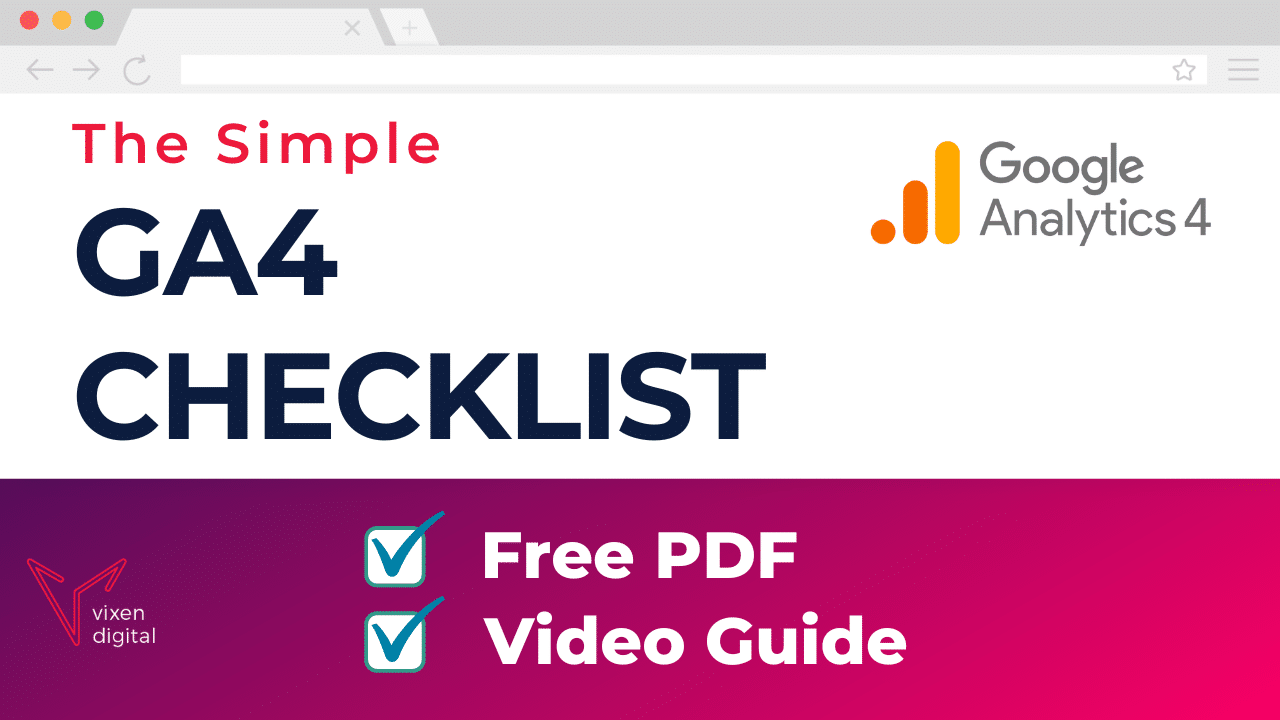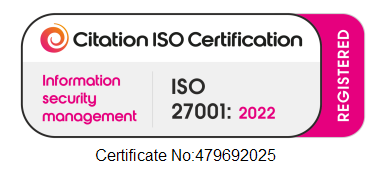Pay-per-click (PPC) advertising is vital to digital marketing strategies since it enables firms to target prospective customers directly through search engines and social media platforms.
According to Statista, advertisers are projected to spend $190.5 billion on search advertising globally in 2024. PPC is going through a seismic shift with the tech giants’ gradual phase-out of third-party cookies, marking a significant turning point for the industry.
The changing PPC landscape makes conducting an effective PPC audit more crucial than ever as brands look to adopt new strategies and technologies.
A PPC audit is essential for assessing your campaigns’ efficacy, identifying development areas, and ensuring your advertising budget is allocated appropriately.
Whether you want to improve your existing campaigns or plan for future growth, this article will give you the insights and tools you need to maximise your PPC efforts.
In this post
What is a PPC Audit?
A Pay-Per-Click (PPC) audit is an in-depth review of a company’s PPC campaign strategy to uncover performance gaps and potential areas for improvement. It examines many aspects, including account structure, keyword effectiveness, ad copy relevancy, landing page alignment, bidding techniques, and budget efficiency. It usually refers to PPC campaigns on Google or Microsoft Ads platforms.
The goal is to discover insights that will lead to better ad performance, higher conversion rates, and a higher return on investment (ROI). A PPC audit assists advertisers in refining their campaigns, making data-driven decisions, and adapting to changing market dynamics, ensuring that every penny spent on PPC advertising is optimised for the best possible results.
How to do a PPC Audit:
The easiest way to conduct a PPC audit is to download and follow along with the template and checklist we are providing you in this article. However, please continue reading if you wish to learn more about some of the key areas to investigate in your account:
Setting Goals and Benchmarks
Before you begin the audit, you need to identify your goals. Goals could include boosting click-through rates (CTR) or lowering cost-per-acquisition (CPA). Once your goals are established, compare your performance to industry standards or historical statistics. This phase will allow you to assess the effectiveness of your audit-related adjustments.

For example, if your goal is to increase CTR, benchmarking against industry norms will provide you with a specific target to shoot for. If the typical CTR in your industry is 2% and yours is at 1.2%, you’ll know your efforts require a significant improvement.
Account Structure
A well-organised account is the foundation for successful PPC ads. Evaluate your account structure to ensure it is consistent with your marketing objectives. Campaigns should be organised into product lines, services, or target audiences, with a clear hierarchy and logical ad group segmentation.

There are many ways of structuring your Google Ads account. And there isn’t a one-size-fits-all solution. However, here are the most commonly used options to choose from:
- Website Structure: Use the layout of your website to structure your campaigns. This method also ensures that each ad group has its dedicated landing page, which can increase your conversion rate.
- Product/Service/Brand: This approach mirrors the website structure method but focuses on categorising campaigns by products, services, or specific brands that you want to promote.
- Location: If you want to target specific geographic areas, creating separate campaigns for each location can be beneficial. This allows for better budget management and tailored ad copy aimed at specific regions.
Keyword Analysis
Keywords are essential components of PPC campaigns. Analyse your keyword list to see which keywords bring traffic and conversions and which are a waste of money. Review your match type usage and make sure you have a comprehensive list of negative keywords to avoid irrelevant clicks.

For example, you may realise that broad match keywords are draining your money while yielding no meaningful results. Focusing on phrase or exact match keywords may help your campaign perform better in this scenario.
Ad Copy and Creative
The importance of your ad copy and creative elements cannot be highlighted enough. They are the first points of contact with your potential clients and play an essential role in generating clicks. Assess your ad copy’s relevancy, clarity, and call-to-action (CTA). In addition, consider the visual attractiveness and message coherence of your creative elements in display and video advertisements.
For example, in a seasonal campaign, check to see if your ad copy is relevant to current trends or events. A travel firm might use summer holiday themes in their ad language, including graphics of famous destinations and ensuring the CTA is enticing, such as “Book Your Summer Getaway Now!”
Add as many assets (headlines, descriptions and others) as possible to ensure the best possible Ad Strength – a new way of Google assessing the quality of your ads.
Landing Pages
A landing page’s performance is determined by its alignment with the ad copy and conversion rate. Each ad should lead viewers to a landing page that closely resembles the promise or service stated in the advertisement. Check the landing page for clear messaging, user-friendly design, and a simple conversion route.
Suppose your ad advertises a free trial of a software application. In that case, the landing page should prominently display the free trial offer, provide information about the software, and have a clear, easy-to-use sign-up form.
Bidding Strategies and Allocating Budget
Effective bidding techniques and budget allocation are critical to increasing return on investment (ROI). Evaluate your existing bidding strategies for each campaign and ad group, taking into account things like bid modifications, automatic bidding features, and overall budget distribution across campaigns. Your goals typically determine the automated bidding strategy.

For example, a manual bidding campaign may be trailing behind in performance. Using an automated bidding approach such as Target CPA, you can optimize bids based on conversion statistics, thereby increasing campaign performance and efficiency.
Quality Score Review
Quality Score is a diagnostic tool that assesses the quality of your advertising, keywords, and landing pages. High Quality Scores might result in lower expenses and better ad placements. Analyse your account’s Quality Scores, paying particular attention to ad relevance, predicted click-through rate (CTR), and landing page user experience.
For example, finding keywords with a low Quality Score could suggest a problem with relevancy or landing page quality. Improving ad copy to match these keywords better and optimising landing pages will help you boost your Quality Scores.
Conversion Tracking
Accurate conversion tracking is critical for determining the effectiveness of your PPC advertising. Check that conversion tracking is appropriately configured for all required actions, such as purchases, sign-ups, and leads. In addition, leverage analytics to acquire insights into user behaviour and campaign performance.
For example, if you notice differences in reported conversions, it could result from tracking code or attribution model issues. Ensuring that each conversion action is properly monitored and ascribed will provide a more accurate picture of campaign efficacy.
Competitor Analysis
Understanding your competitive landscape is essential for understanding opportunities and risks in your PPC advertising. Analyse your competitors’ ad text, keywords, and landing pages to compare your performance and identify strategic gaps.
For example, use tools like SEMrush or Google Ads’ Auction Insights to compare your ads’ impression share and position to those of competitors. If a rival frequently outranks you for similar products, look at their ad text and landing sites to learn about their strategy and performance drivers.
>> You can also check out our top SEO tools for digital marketers which give some great competitor analysis options.
Compliance and Best Practice
Staying following advertising policies and best practices ensures that your campaigns operate successfully and uninterrupted. Verify your account for conformity to the most recent platform policies and guidelines governing ad content, landing pages, and data privacy.
For example, a healthcare organisation must ensure that all ads and landing pages comply with GDPR, HIPAA, and other privacy requirements and that no personal health information is used without proper approval.
Asset Optimisation
Ensure that your assets are optimised for the platforms they will be used, considering image size, video duration, and ad format restrictions. Optimisation also entails using platform-specific features, such as carousel advertising on Facebook or enlarged text advertisements on Google, to increase the effectiveness of your campaign.
For example, for Instagram Stories advertising, build vertical videos that attract viewers’ attention within the first few seconds, then use rapid cuts and vibrant visuals to keep them engaged.
Optimising your PPC advertising with assets (previously known as ad extensions) increases visibility and delivers more information about your offering without increasing ad spending. Google simplifies the management of automated assets for performance analysis, and manual tweaks can be made to correspond with ad objectives.
Sitelinks for direct navigation, structured snippets for brief descriptions, lead forms for email list growth, callouts and promotions to highlight offers, location extensions for local visibility, phone call extensions for direct contact, images for visual impact, and business information to increase brand recognition are all examples of assets.
Choosing the correct combination of assets ensures that your ads are relevant, match your business’s identity, and effectively support your advertising goals.
Outdated rules and scripts
Evaluating your PPC ads for obsolete rules and scripts is crucial to assuring their effectiveness and relevancy. Automated rules or scripts previously set up to manage bids, pause underperforming ads, or alter budgets could grow obsolete as your marketing plan evolves, consumer behaviour shifts, or the advertising platform is updated.
These out-of-date automations may not only fail to contribute to the performance of your campaign but may actively harm it by making improper adjustments based on outdated criteria.
Regularly checking and updating these rules and scripts ensures your campaigns run smoothly, allowing automation to complement rather than distract from your PPC approach.
Future Strategy Planning
Based on the audit findings, create a strategy for optimising and scaling your PPC campaigns. This includes establishing new objectives, experimenting with various ad formats, and investigating new platforms or audiences.
For example, if your audit shows that mobile users convert at a greater rate, reallocate more funding to mobile-specific ads and optimise landing pages for mobile to capitalise on this trend.
How often should you conduct a PPC audit?
The frequency of a PPC audit might vary depending on various criteria, but a quarterly audit is a good starting point.
The specific regularity of your audits should consider your individual business requirements, the age of your PPC account, the size of your team, and any crucial modifications or additions to ad platforms. As you become more familiar with the audit process and develop clarity on the goals you want to achieve, you can create an audit timetable that meets your specific needs.
Over time, you may discover that your organisation benefits from more or fewer audits than initially envisaged.
Key Takeaways
- Regular PPC audits are critical for finding areas for improvement and maintaining budget efficiency.
- A well-structured account, optimised keywords, attractive ad copy, and high-quality landing pages are essential for PPC success.
- Conversion tracking and analytics provide the data required to evaluate performance and make strategic decisions.
- Competitive analysis assists in staying ahead of the market by identifying strengths, weaknesses, and opportunities.
- Future strategy planning is critical for growth, necessitating ongoing testing and adaptation to changes in consumer behaviour and market dynamics.
PPC Audit services vs in-house audits
Using PPC Audit Services rather than conducting audits in-house provides several key benefits. Although you may have the PPC skills required in-house, these services can reveal deep insights and optimisation opportunities that would otherwise go unnoticed, mainly because you’e introducing a fresh set of eyes and analysis into your account.
Professionals specialising in PPC audits are skilled at navigating the ever-changing landscape of digital advertising, armed with the most recent best practices and knowledge of platform-specific intricacies. Furthermore, outsourcing this process frees up precious internal resources, allowing your team to focus on key company tasks while guaranteeing that your PPC campaigns are adequately tested.
Audit services also provide an independent viewpoint, critical for spotting problems and making objective decisions to improve campaign performance.
Ultimately, the benefit of leveraging PPC Audit Services lies in their ability to deliver comprehensive, actionable recommendations that drive measurable improvements in campaign efficiency and ROI.
Free PPC Audit with Checklist & Template














